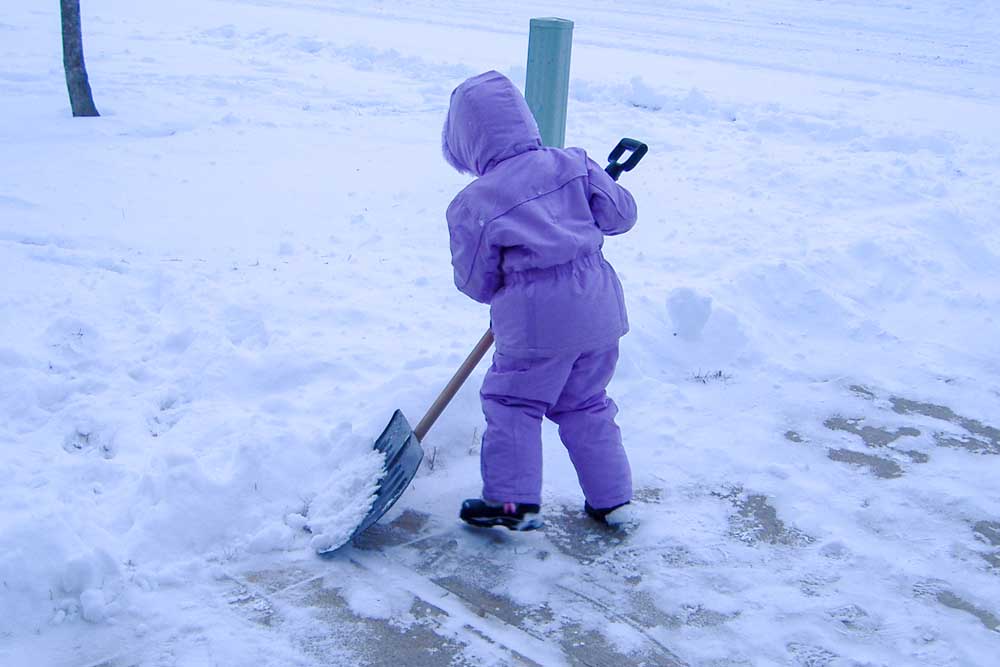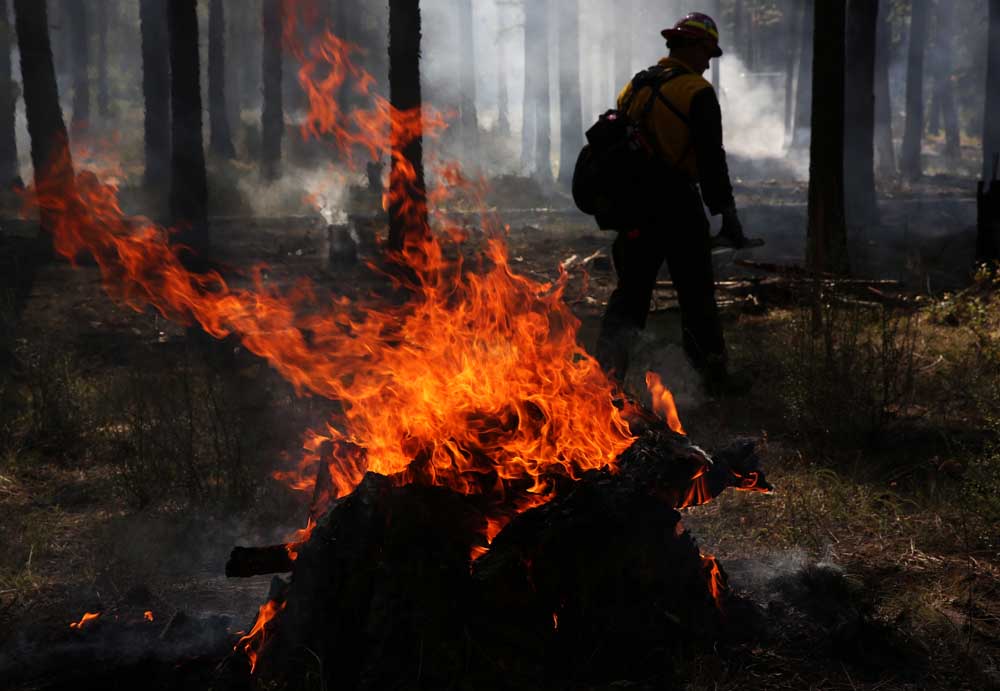The best way to shovel all that snow
Published 7:30 am Wednesday, December 14, 2022

- Shoveling snow
Redmond, like much of Central Oregon, got dumped with more snow than anybody cared to shovel. The number one question on everybody’s mind: Is it time to trade the old scoop and handle for a masculine, powered blower? Here’s some information to help you decide.
What kind should I use?Shovels come in varying shapes and sizes, serving different purposes. Generally, there are three categories: lifter, pusher and sleigh. Lifting shovels feature square-shaped blades, best for scooping and lifting snow to throw onto a snowbank.
Sleigh shovels are designed to move large amounts of snow down an incline. They have square-shaped scoops that can reach 2 to 3 feet in width and length, with a handlebar for gripping with both hands. They cannot be lifted off the ground when loaded. They are also good for shoveling roofs.
Some shovels now come with ergonomically-shaped handles that are supposed to be better for your back. It is important to maintain good posture. Bend your spine under load and expect pain. Lots of it. Listen to your body.
Metal vs. plastic?Plastic shovels are more common. For starters, they are lighter. Snow sticks to plastic less than metal, helping the snow release. But plastic breaks over time and isn’t good for chipping ice or packed snow — unless it has a metal edge, well worth the extra few bucks.
Heavier, metal shovels help get deeper into snow for lifting. Spray non-stick cooking oil on the blade, both sides, or use your car wax to keep snow from getting stuck to your shovel.
Getting startedWith shovel in hand, get to work. If you are older than 55 and/or have a history of cardiovascular disease, stroke, or heart problems, let someone else shovel the snow. If you smoke or are overweight, then it is really dangerous for you to be shoveling snow. While snow shoveling looks like a benign household chore, it is extremely taxing on the heart.
Back injuries and lower back muscle strain while shoveling snow are common. Lift with your legs. And don’t throw snow over your shoulder. Use good form when shoveling snow.
Avoid lifting large shovels of snow, bending at the waist or turning your torso, and then chucking large amounts of snow. All you are doing is taxing your heart and straining your muscles. As you lift each shovelful of snow, lifting with your legs all the time, walk over to dump the snow in a pile. Work smarter, not harder.
Don’t shovel the same snow twice. Decide upfront where you will make your piles. That way, you can shovel and dump your snow progressively closer to your snow piles. Try the “rectangles” grid technique. Working in rectangle formation, shovel snow from the center of the rectangle and dump it along a rectangle grid corner.
One cubic foot of snow, a shovel full, could weigh as much as 15 to 20 pounds. Shoveling 10 inches of snow from a two-car drive and a 60-foot sidewalk is close to a ton of snow!
Think that sweating and working hard will keep you warm shoveling in cold weather? The exact opposite is true. Strenuous snow shoveling in cold weather will drain your body heat, dangerously so. Sweating while dressed in light layers in cold weather also wicks body heat.
Shovel snow in fluid, rhythmic motions. Don’t shovel too much snow, and don’t overexert yourself. Be sure to breathe while you are shoveling snow. Holding your breath strains the body, constricts blood vessels, and lessens the amount of blood and oxygenation your body needs to complete the task. You may also increase the risk of feeling light-headed, dizzy, or fainting as you work. Breath in-and-out normally as you shovel snow. It’s not as easy as it sounds. Just do it hospital emergency departments tell us.
Redmond’s Municipal CodeSnow and ice control on sidewalks adjacent to commercial properties are the responsibility of the adjoining property owner, occupant or person in charge of property per City Code [5.335, §6]. All driveways and sidewalks adjacent to privately owned properties are the responsibility of the owners. Snow removed from sidewalks and driveways should be retained on the properties to avoid blockage of the street drainage systems. Sidewalks under City responsibility (buildings, parking lots, parks) will be maintained by Public Works with high pedestrian use areas receiving priority.








